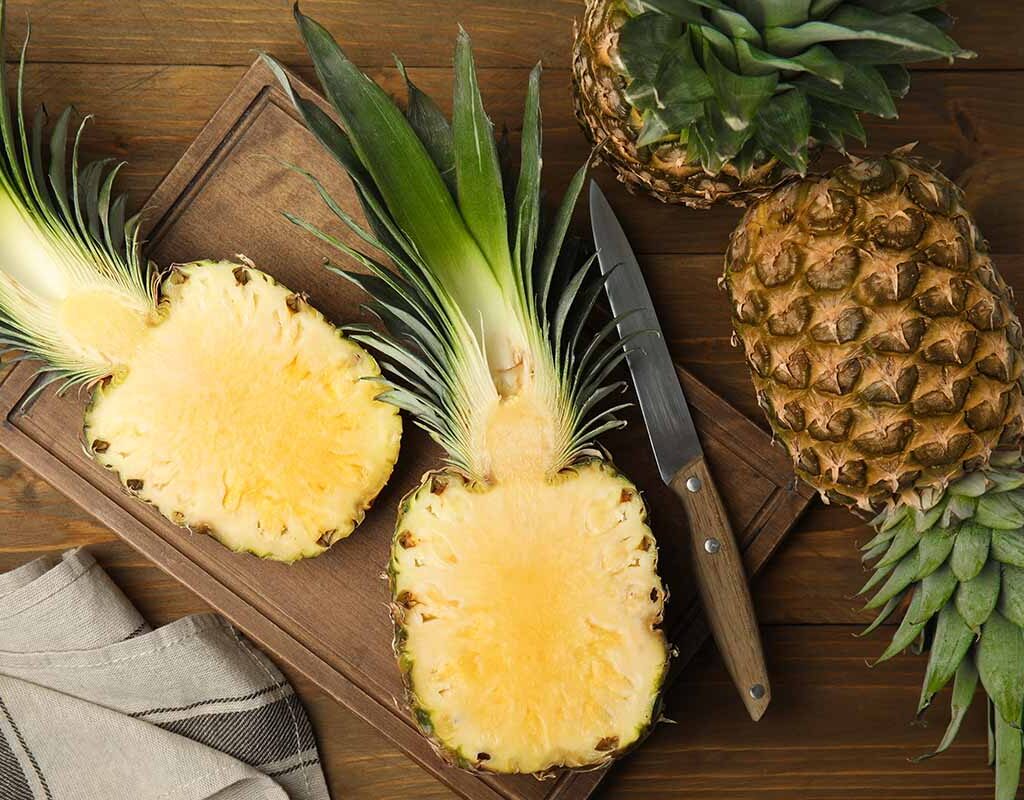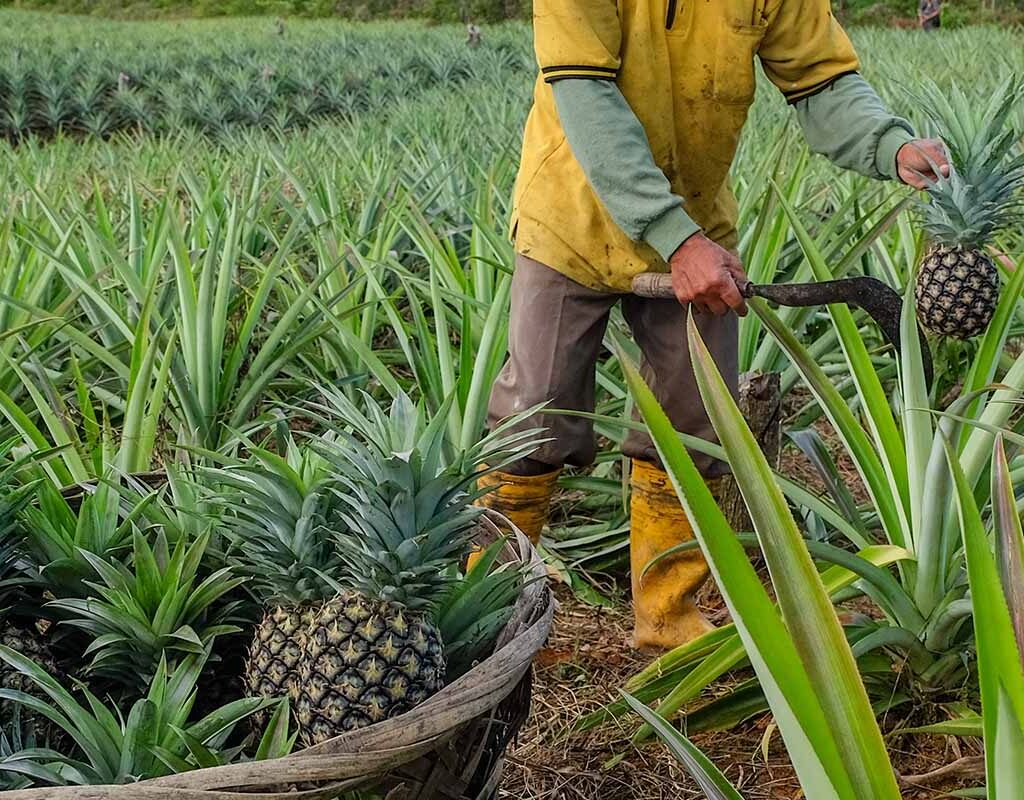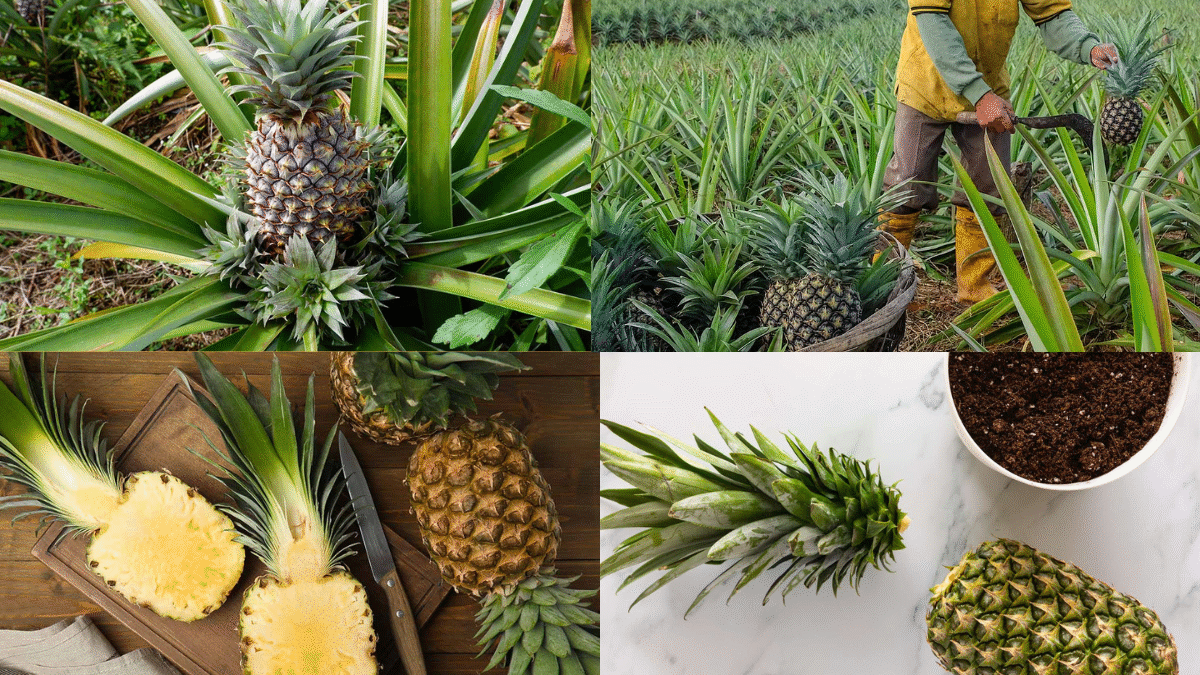Have you ever looked at a fresh pineapple and wondered if you could grow one yourself? Good news — you absolutely can! Not only is planting a pineapple an enjoyable and easy project, but it’s also a fantastic way to grow a unique, exotic plant right in your home or garden. While pineapples take a little patience, the reward of harvesting your very own tropical fruit is well worth the wait.
In this guide, we’ll cover everything you need to know about how to plant a pineapple, from choosing the right fruit to caring for your plant and finally enjoying your harvest.

Why Grow a Pineapple at Home?
Growing a pineapple at home is a rewarding project for several reasons:
- Pineapples are surprisingly easy to grow from the crown of a store-bought fruit.
- They make a beautiful ornamental plant with spiky foliage and unique texture.
- It’s an excellent conversation starter and a fun gardening experiment.
- Homegrown pineapples are incredibly sweet and flavorful — and pesticide-free.
- You can grow them indoors, outdoors, or in containers.
What You’ll Need
Before you get started, gather these basic supplies:
- A ripe, healthy pineapple
- A sharp knife
- A glass jar or cup (for rooting in water)
- A medium-sized pot or a garden bed with well-draining soil
- Cactus or succulent potting mix (or sandy, loose garden soil)
- Water and a sunny, warm location

Step-by-Step: How to Plant a Pineapple
1. Choose the Right Pineapple
For the best results, select a fresh, ripe pineapple from your grocery store or farmer’s market. Look for:
- Healthy, green leaves with no yellowing or browning.
- A firm, plump fruit with no soft spots.
- A sweet, fruity aroma at the base.
Avoid pineapples with dried, brown, or withered leaves as these won’t propagate well.
2. Remove the Crown
The pineapple is propagated from its leafy top (called the crown). Here’s how to prepare it:
- Hold the body of the pineapple firmly in one hand.
- With your other hand, grab the leaves at the top and gently twist. The crown should detach with a bit of the core attached.
- Alternatively, you can cut off the crown using a sharp knife, leaving about half an inch of fruit attached.
- Carefully trim away any excess fruit flesh to prevent rotting.
3. Prepare the Crown for Rooting
Before planting, it’s essential to prepare the crown properly:
- Strip away a few of the lower leaves to expose about 1–2 inches of stem.
- Let the crown dry for 1–2 days in a shaded area. This allows the cut end to heal and reduces the chance of rot.
4. Root the Pineapple Crown
There are two ways to root a pineapple: in water or directly in soil.
Option 1: Rooting in Water (Recommended for Beginners)
- Fill a glass jar with water.
- Place the crown in the jar, ensuring only the bare stem is submerged, not the leaves.
- Put the jar in a bright, warm spot out of direct sunlight.
- Change the water every 2–3 days to keep it fresh.
- Within 2–4 weeks, small roots will start to develop.
Once the roots are about 2 inches long, you can transplant the crown into soil.
Option 2: Direct Planting in Soil
- Fill a pot with well-draining soil (preferably cactus or succulent mix).
- Plant the crown about 1–2 inches deep, firming the soil around the base.
- Water lightly and place in a warm, sunny spot.
- Keep the soil slightly moist, but not soggy.
5. Transplanting to a Larger Pot or Garden Bed
Once the plant establishes itself and starts to show new leaf growth, you can move it to a larger pot or directly into your garden if the climate allows.
- Choose a location with full sun exposure.
- Use well-draining, sandy or loamy soil with a pH between 4.5 and 6.5.
- Space multiple pineapple plants about 3–5 feet apart if planting outdoors.

Caring for Your Pineapple Plant
Now that your pineapple is planted, here’s how to help it thrive:
Light Requirements:
- Pineapples love bright, indirect light.
- Indoors, place it near a sunny window.
- Outdoors, it thrives in full sun to partial shade.
Watering:
- Water your pineapple deeply but infrequently.
- Let the top inch of soil dry out before watering again.
- Avoid overwatering, as pineapples hate soggy soil.
Temperature:
- Ideal growing temperatures are 65°F–85°F (18°C–29°C).
- Protect from frost or bring indoors during cold months.
Fertilizing:
- Use a balanced, slow-release fertilizer or a liquid fertilizer diluted to half strength.
- Fertilize every 6–8 weeks during the growing season.
Pests and Problems:
Pineapples are relatively pest-free but watch for:
- Mealybugs
- Scale insects
- Root rot (from overwatering)
Treat with neem oil spray or insecticidal soap if needed.
How Long Until You Get a Pineapple?
Patience is key! Pineapples are slow growers:
- It typically takes 18–24 months for a mature plant to produce fruit.
- Flower spikes appear in the plant’s center, followed by a developing pineapple.
Once your pineapple turns golden-yellow and emits a sweet fragrance, it’s ready to harvest!

Harvesting Your Pineapple
When your pineapple ripens:
- Gently twist or cut the fruit off at the base.
- Be careful not to damage the surrounding leaves if you plan to propagate again.
- Enjoy your fresh, homegrown pineapple sliced, juiced, or in recipes.
Fun fact: After harvesting, the parent plant may produce suckers or pups — small offshoots at the plant’s base. These can also be removed and replanted, continuing the cycle!
Can You Grow a Pineapple Indoors?
Absolutely! Pineapples are well-suited to indoor container growing in bright, sunny rooms. Just ensure:
- The plant receives at least 6 hours of sunlight daily.
- You use a well-draining pot and soil.
- Maintain a warm environment, especially in colder months.
In fact, many people keep pineapples as decorative houseplants even before they fruit, thanks to their striking, spiky foliage.
Final Thoughts
Growing a pineapple at home is a fun, rewarding project that doesn’t require a green thumb. Whether you live in a tropical climate or a cozy apartment, with a little patience and care, you can enjoy the novelty of growing your own sweet, juicy pineapple.
From rooting the crown of a store-bought fruit to harvesting your first homegrown pineapple, every step is an enjoyable gardening adventure. Plus, it’s a great way to reduce waste by giving new life to a fruit you might otherwise discard.
So next time you pick up a pineapple at the store, why not save the crown and start your own tropical harvest at home?





Leave A Comment